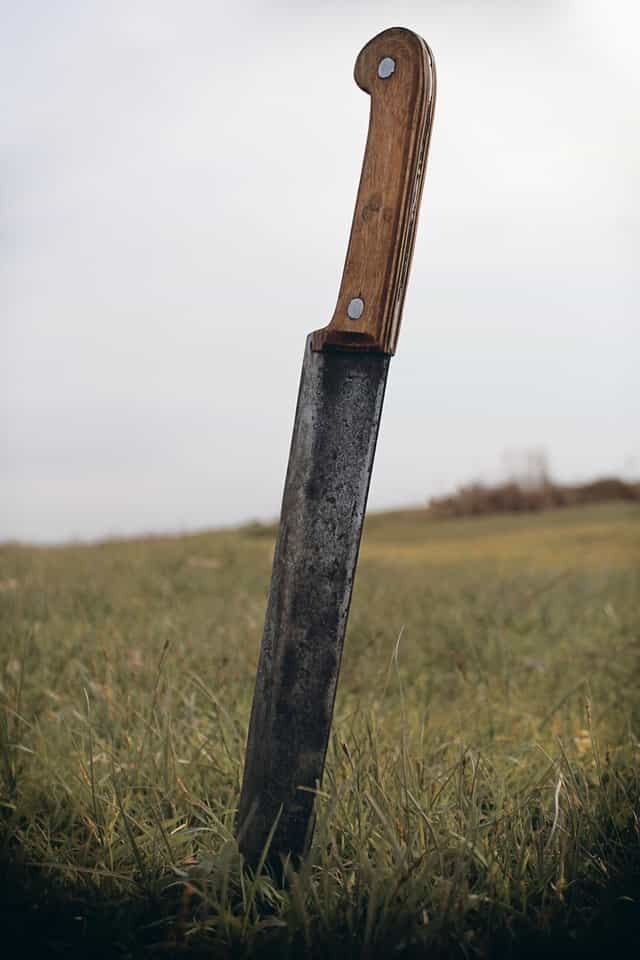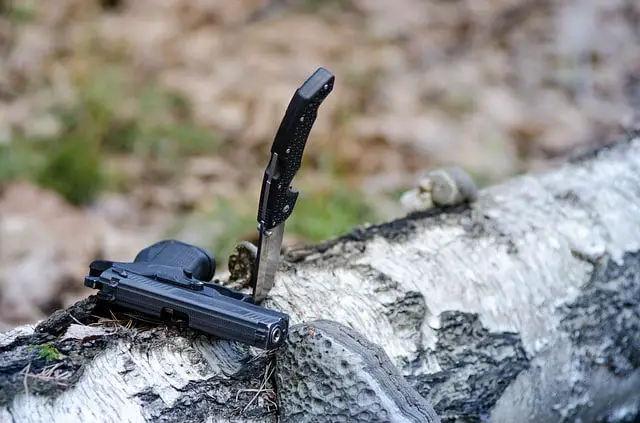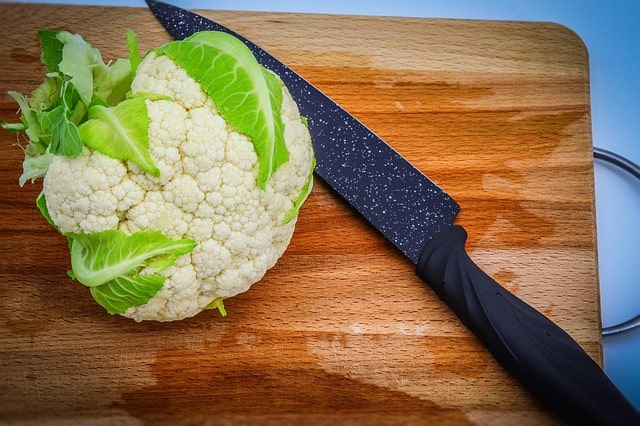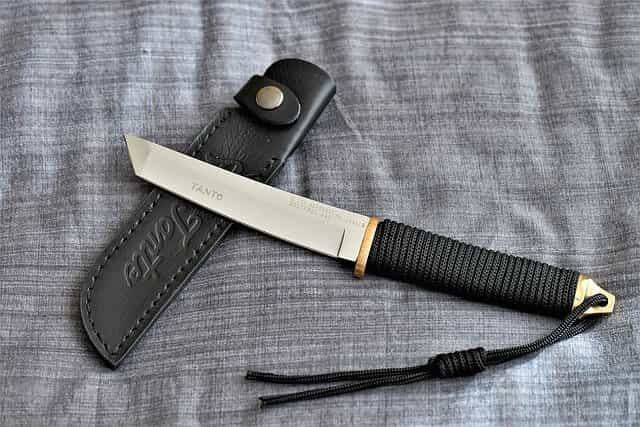We all love our stainless steel knives – till they get dull or start showing signs of rust.
In the case your knife blade was going dull, you know what to do already. But what do you do when rust starts showing its ugly face on your premium knife blade?
In this piece, I’ll be taking you through what causes rust spots on your knife blade, how to get rid of rust spots and what to do to prevent it from happening again.
PS If you only want to know about rust removal, click here to jump to that section.
Table of Contents
What causes your knife to rust?
The same combination that makes every other thing suffer rust:
Iron. Air. Water.
When the three are present and combined, rust is bound to happen.
But then, stainless steel isn’t iron – and it is supposed to be stainless anyway, right? Wrong.
Your stainless steel kitchen knife is an iron-based alloy of different materials. The fact that there is iron content in it means it can attract rust too.
Exposing the knife to moisture and air, over time, will cause some rust to start appearing on it.
This can be prevented as discussed in the final section. Click here to jump to knife rust prevention tips and techniques.
Ten Methods to Remove Rust Stains from your Knife Blade
I have discussed multiple methods of getting rust off your knife blade under the various headings below.
If you don’t have the materials for one, you should have the means for the other. The good news is that they all work.
PS Always ensure your knife blade is washed/ wiped down with a cloth/ clean before you attempt any of these methods.
Solution #1 – Use Baking Soda

Application: light rust stains. Thin metal.
Materials needed: wire sponge/ steel wool/ old toothpaste; water or lemon juice; baking soda; dishwashing liquid; dry towel.
- Step 1 – wash the surface of the knife with dishwashing liquid, rinse and dry thoroughly. That prevents dirt from interfering with the rust removal process
- Step 2 – pour a fair amount of baking soda into a bowl and add some water. The goal is to make a baking soda paste. You can also add lemon juice instead of water.
- Step 3 – spread the baking soda paste over the rust stains on the knife blade.
- Step 4 – leave the thick paste to sit on the knife for about 30 minutes to an hour. The timeframe is dependent on how serious the rust stains are.
- Step 5 – take an old toothbrush to the paste and scrub vigorously. For stubborn stains, a steel wool/ sponge gets the job done
- Step 6 – clean rust by wiping the blade down with a soft cloth. You can also wash the blade again with dishwashing liquid after wiping it down.
- Step 7 – this stage is optional. Repeat the step if the blade is not free of rust yet.
- Step 8 – rub some mineral oil on your knife’s blade before storing it this time. That keeps the rust out.
Solution #2 – WD-40
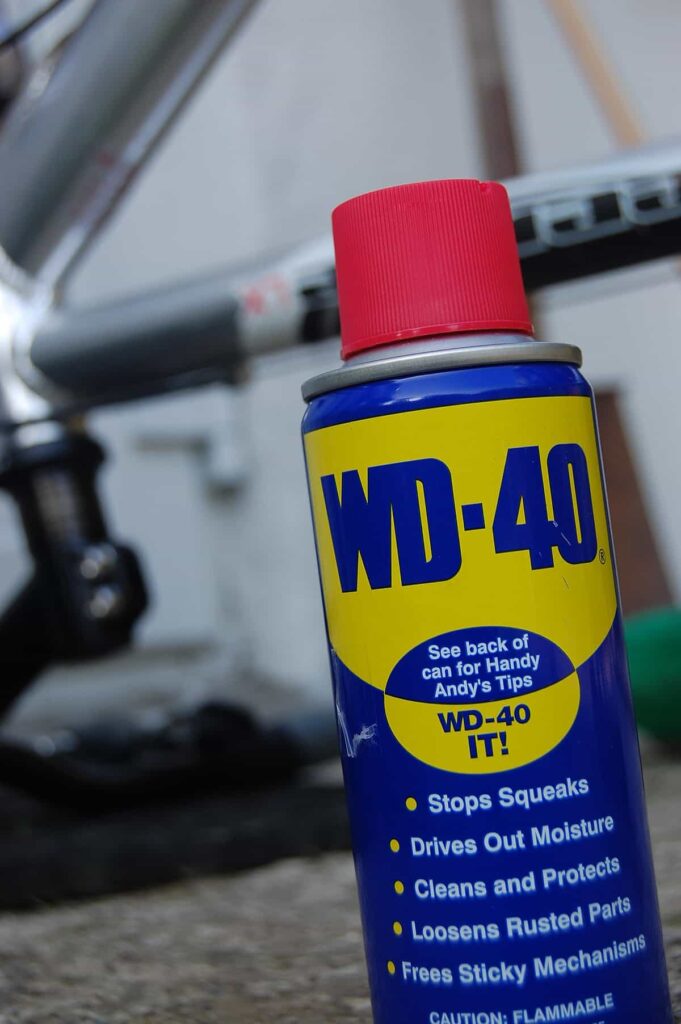
Application: NEVER to be used on food-prep knives; best for heavy rust
Materials needed: WD-40; sandpaper
- Step 1 – get your can of WD-40. You can purchase it on Amazon
- Step 2 – spray the affected parts of the can with the chemical
- Step 3 – with sandpaper, gently wipe the affected sides of the blade. Make sure to steer clear of the knife’s edge
- Step 4 – wipe down the knife with a soft cloth
- Step 5 – observe the work. If more rust needs to be removed, repeat the steps above.
- Step 6 – wash the knife to get rid of the excess chemical.
Again, never apply WD-40 on knives you use in the kitchen.
Solution #3 – Use White Vinegar
Application: significant rust
Materials needed: white vinegar; abrasive sponge; dishwashing liquid; dry towel.
- Step 1 – pour some white vinegar into a bowl
- Step 2 – get your rusty knife and soak it in white vinegar. Leave the knife to soak in the white vinegar overnight to dissolve rust.
- Step 3 – the next day, get your sponge and scrub down the rust stains on the knife
- Step 4 – depending on how set the rust is, you should be able to remove all or some this way.
- Step 5 – soak the knife again if you were not able to get rid of rust spots totally the first time.
- Step 6 – when you’re satisfied with the removed rust spots, wash the blade with dish soap and dry with a towel.
PS Vinegar is an aqueous form of acetic acid. Some stores use the name interchangeably so ask to be sure of what you are getting.
Solution #4 – Onion
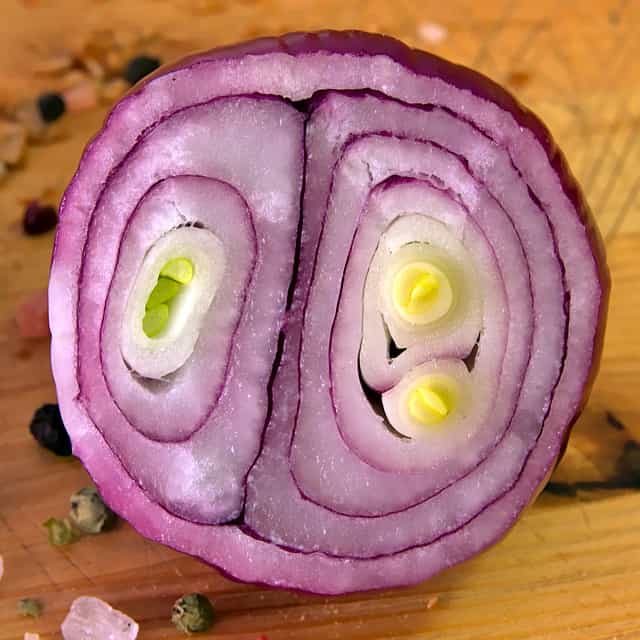
Application: very mild to mild rust
Materials needed: onion
- Step 1 – get a piece of ripe onion. The sulphenic acid inside the onion is what we’re interested in
- Step 2 – cut through the onion with the rusty blade.
- Step 3 – for mild rust, the onion acid should remove the rust from the knife.
PS This natural rust removal process might take some time, so you are better off with the other methods anyway.
Solution #5 – Lemon Juice
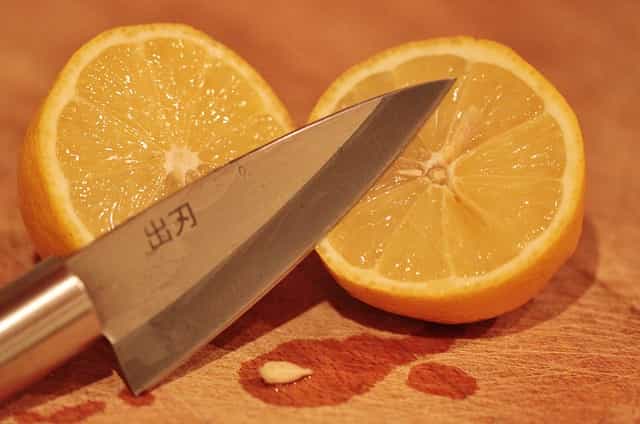
Application: mild to medium rust
Materials needed: lemon juice; salt; steel wool/ wire brush/ toothbrush; water; dish soap.
- Step 1 – put some sale on the rust stains of the knife blade
- Step 2 – squeeze the lemon juice on the salt. The acid in the lemon juice is what we need to get the job done.
- Step 3 – leave the salt/ lemon juice mixture to sit on the stain on the knife’s blade for about 2 hours
- Step 4 – scrub the surface of the knife with the lemon juice/ salt mixture using a steel wool or other abrasives to clean rust.
- Step 5 – Repeat the steps above if the rust stains have not been eliminated
- Step 6 – wash the knife blade thoroughly after you get rid of the rust.
Solution #6 – Use some Dirt

Application: varies
Material needed: dirt/ soil; dishwashing liquid.
- Step 1 – plunge your rusty blade into the soul about a dozen times. Make sure the soil is not too strong lest it ruins your blade
- Step 2 – wipe the blade clean after the plunging and withdrawal methods.
This method takes advantage of the abrasiveness of the soil. Since stainless steel rust is not tightly bound to the metal, the dirt should be able to drive off some or all of the rust, depending on the severity.
Solution #7 – The Salted Potato Technique (Oxalic Acid)
Application: mild to medium rust
Materials needed: potato slices; dish soap; baking soda/ salt;
- Step 1 – slice the potato and put some dish soap on the sliced part. The oxalic acid present in potatoes is what we’re interested in here
- Step 2 – sprinkle some baking soda/ salt onto the surface of the potato. The abrasiveness of these additions helps to grind the rust off as it dissolves
- Step 3 – rub the rust on the blade with the potato surface gently. This should dissolve the rust and remove it at the same time
- Step 4 – clean the blade when you’re done. Repeat the process with the other half of the cut potato if you aren’t satisfied with your results yet.
Solution #8 – Scrubbing Method
Application: very mild to mild rust; medium rust
Materials needed: abrasive – such as sandpaper, steel wool, iron sponge, etc.
- Step 1 – get your preferred abrasive tool as discussed above
- Step 2 – wet the body of the rusty knife blade. This step is optional but necessary
- Step 3 – scrub the affected parts of the knife with an abrasive to get rid of the rust. Depending on the level of the rust stains, you might have to put some elbow into this step.
- Step 4 – rinse the knife off and store it away safely
Solution #9 – Try Citric Acid
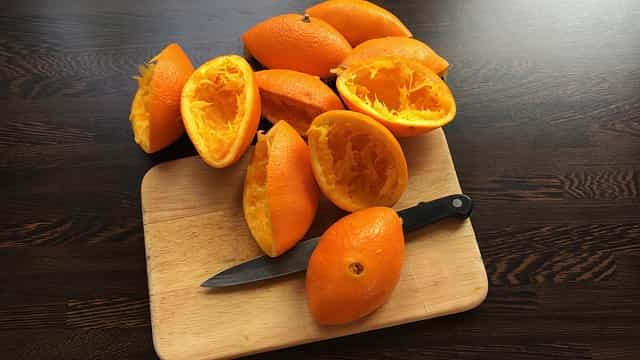
Application: not for coated knives; not for painted knives.
Materials needed: citric acid; water.
- Step 1 – boil some water and add about 2-3 tablespoons of citric acid to it
- Step 2 – soak the rusty blades overnight
- Step 3 – scrub off the rust from the blade metal the next day
- Step 4 – either repeat the process if you’re not satisfied or wash the knife and store it away if okay already
Solution #10 – Try Chemical Solutions
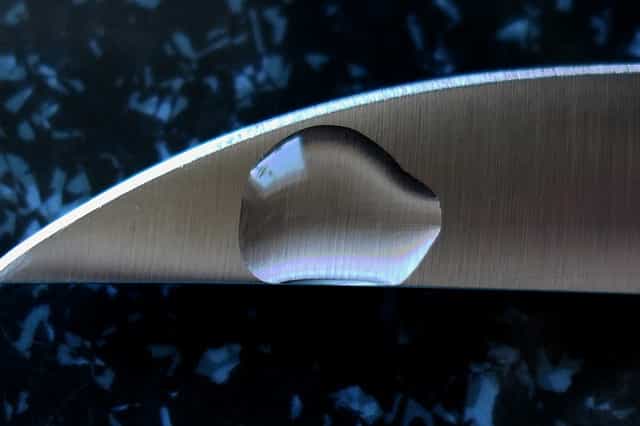
Application: medium to high rust levels
Materials needed: chemical solution of choice.
- Step 1 – get a preferred chemical solution. I would recommend this Evapo-Rust Non-Toxic Rust Remover on Amazon
- Step 2 – follow the instructions on the chemical substance to remove the rust from your knife blade
- Step 3 – clean the knife properly when you’re done removing the rust
Preventing Rust from Your Steel Knives
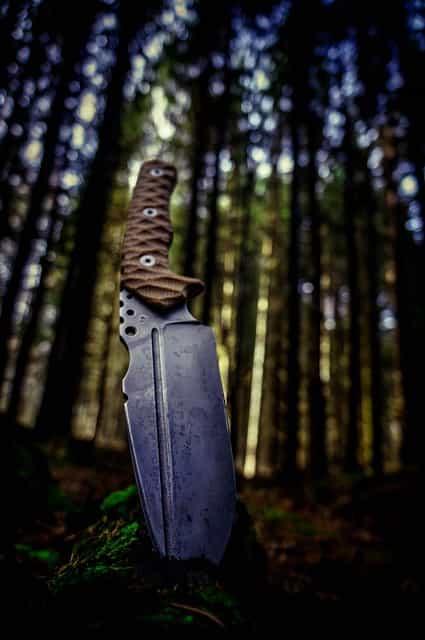
All those tips and methods that I discussed above for removing rust are great – but what about if you never had to bother with them at all?
The best way to solve the knife’s rust problem is to prevent it in the first place. Here are some tips to prevent rust from getting to your knife at all.
Wash your knives properly
Hand washing is the best way to clean your knife properly.
It is poor form to put your knives in a dishwasher as the heat from the machine causes them to expand. On cooling, they contract to their original sizes. This alternate heating and cooling could cause stress and cracks in the metal so much that the crevices allow rust to settle.
Dry your knives off
Remember the not-so-secret formula for rust to happen in knives?
When you wash your knives, water is involved. If you don’t dry the blade of your knife off instantly, air comes in contact with the water on the body of the iron and rust happens.
Thus, always have a dry towel handy when washing your knives so you can dry them off faster.
Keep your knives in cool, dry places
I keep my knives in my sieve when I’m done cleaning them.
I know that is not the most conventional, but it works for me.
If you have a larger collection of knives or you just want to store them better, you can try:
- Using a magnetic strip (here’s a great made-in-USA magnetic knife strip)
- Knife block – if your kitchen knife set didn’t come with one, get this fine knife block. It even sharpens your knife when you store them back.
Avoid saltwater
Whether when washing or using the knives, make sure they don’t come in contact with salt water.
For reference, there was this Syperderco salt series knife that was built to withstand rust, no matter what. The only (unverified) claims of the knife succumbing to rust after many years of extreme use came from those who took them to sea.
If you must use knives in a saltwater environment, stay off stainless steel knives. You can do better with a ceramic or titanium blade knife instead.
Never soak your knives
Except when you are trying to get the rust off as I suggested above.
Soaking your knives doesn’t only improve the chances of getting rust stains on them. For wooden handles and some plastic handle knives, extended soaking could also cause the handle to come off much faster.
Final Words
Whether you’ve got some rust on your knives or you just want to learn some tricks to prevent that from happening in the first place, this guide will help you get it done.
Like I’ve always said, make sure to buy great knives from the onset and they’ll take care of you in the long run.

